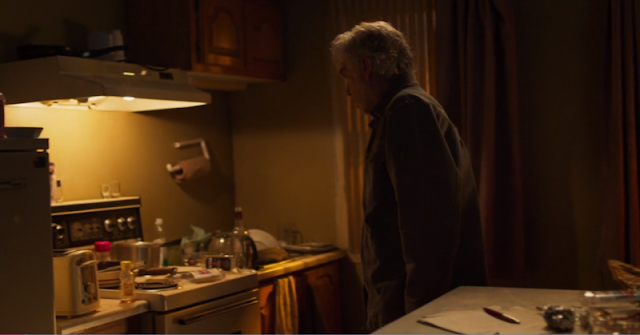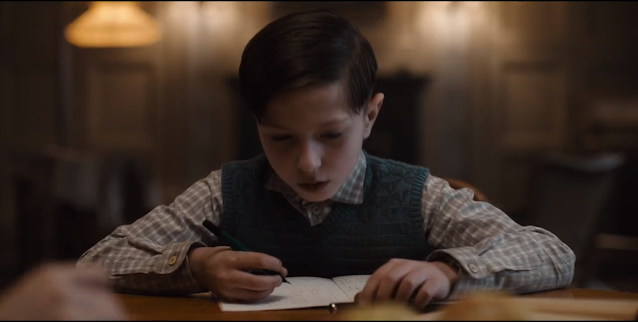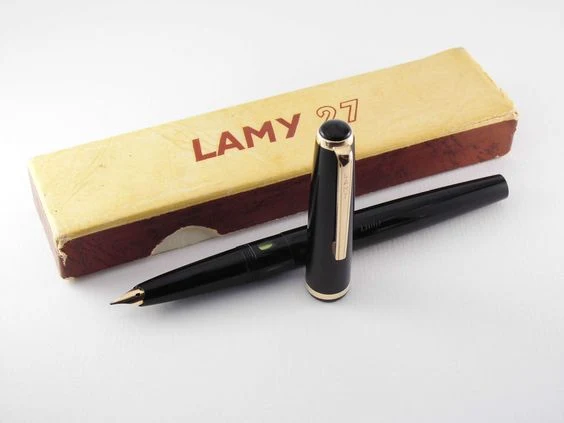Saturday, December 26, 2020
Seen on the screen, Christmas mood
Friday, December 4, 2020
Faber Castell lead grade and a bit of history
Wednesday, November 25, 2020
World record for sharpening pencils
The real life professional pencil sharpeners manage to beat the virtual time by a landslide. The competition is dominated by the USA in first and third place, and every other place, while Canada bringing home the silver.
Thursday, November 5, 2020
fountain pens in Dark series on Netflix s1e8
Continuing the Dark binging this weekend I have spotted in season 1 episode 8 two nice fountain pens. This time the action is further back in time in 1953, and the camera doesn't show too much to be able to recognize easily what pens are in the picture.
The first fountain pen that appears in the shot is a classic looking cigar shape pen that resembles a Pelikan, but it is impossible for me to tell if indeed it's a Pelican or what model. We can only see the shape, the trim on the cap, and on the body, but the clip and nib are not visible.
The shot doesn't last too long and it presents the fountain pen on top of a case file.
The second fountain pen is used by a young boy to do math.
Again I can't really say what the young boy is using, but it seems to have a hooded or a semi hooded nib, gold color. It could be a Pelikan MK model but I think all of those were snap cap while this cap was screwed on to the body by the boy. Also, Montblanc nr 32 has a very close appearance but the logo on the cap is not present.
The body does not feature any trims, and the top part of it looks to be in a slightly different color
Another wild guess about the fountain pen is Lamy 27, it has the gold trim, it has the screw cap. In the end, it is guesswork as it is hard to see details, as no closeups are available.
Being so far back the director might intentionally omit such closeups just to be safe, and not mess up the story with products that were not available to the consumers back then.
Thursday, October 22, 2020
Rotring Isograph in Netflix Dark series
In 1986, Charlotte is analyzing and keeping track of the birds that are dying.
Rotring Isograph is a technical pen that uses pigmented ink. Being a technical pen it comes in all the possible sizes from 0.1 mm to 2.0 mm and everything in between. It uses refillable cartridges.
It is nice that the producers of the show have gone to the length of finding correct writing instruments for the period of time presented, and not only that, but they used such an iconic product.
Thursday, October 8, 2020
Rotring polimer leads
 |
| rOtring catalog 1980 Romania |
A new design of the lead box was released in the later years. I do not know exactly when the new design was launched to the market but it was before 1990. Most likely the formula changed as well as the package. The leads were not any kind of Polymer but a hi-Polymer.
The new lead boxes contained 16 leads divided evenly into two compartments that. The compartments were independent and each had its own cap, even though the caps were connected to each other.
 |
| rOtring catalog 1990 |
In addition to the size, color coding was added to the label. And of course, the number of leads in the package was reduced to 12 pieces instead of the previous 16.
The box kept the same design and color.
 |
| rOtring catalog 1996 |
 |
| rOtring catalog 2005 |
 |
| rOtring catalog 2008 |
Friday, September 25, 2020
Koh-I-Noor 2mm pencil and lead, 6 color set
The price is good as with all the Koh I Noor products. I got them for 1.51 EURO or 1.84 USD.

The brown, blue, green look good and can be used for marking stuff with no problems. The red is a bit dull and not very vibrant but it is ok. The yellow is no surprise here, it can only be used for highlighting, as it is too washed out to write with it.
My favorite colors are the green and blue, followed by the brown and then red.
An erase test showed that they are not too stubborn and can be erased without too many problems. I have put to the test the Rotring Tikky and the Faber Castell Dust Free 187121 erasers. The Faber Castell did a much better job.
Sunday, September 6, 2020
A Parker Jotter in the movie Oldboy
In the intense thriller Oldboy (2003) the main character is imprisoned along with a stack of envelopes, papers, and a Parker Jotter pen.
A great instrument for writing, very classy and slick
But apparently, you can also use it as a makeshift tattoo gun. Take the refill out, heat it and ink away. I not going to comment about this...
Tuesday, August 25, 2020
Staedtler erasers
The simple test consists of erasing a softer 4B lead and a more standard HB polymer lead.
And here are the results of the test. Both did a good job, especially on the polymer lead. The 4B was a little bit trickier. The German is more prone to smudging and feels a bit sticky. And this is seen on the eraser as it gets dirty, especially after using it on the 4B lead.
On the other hand, the Thai is crumbling a bit more while erasing, keeping it cleaner.
I can not say that one is a clear winner, as they both did well in certain areas. The German was a hair better at writing and lines, but because the Thai crumbles more it was more effective in the areas where there were a lot of pencil marks.
Taking a look at the eraser dust it's clear that the German sheds less, and usually in finner dust that the Thai.
Popular Posts
-
This is the best and most fun game you can play, and you have to try it now. Why? Because it's hilarious, fast-paced, everyone in the...
-
I am a long Rotring Tikky user and today I will share with you the beloved mechanical pencil. I got my first Rotring mechanical penci...
-
Jinhao made me very curious with one of its latest fountain pen in the lineup. I had to have the pen just because of its nib. It is a bit un...
-
Rotring has moved away from fountain pens over the years. The only fountain pen model that is still available is the Rotring Artpen, whic...
-
The fountain pen ink is produced by Koh-I-Noor in the Czech Republic. It comes in a plastic bottle, 50 g (or roughly 50 ml) like in the pi...










































